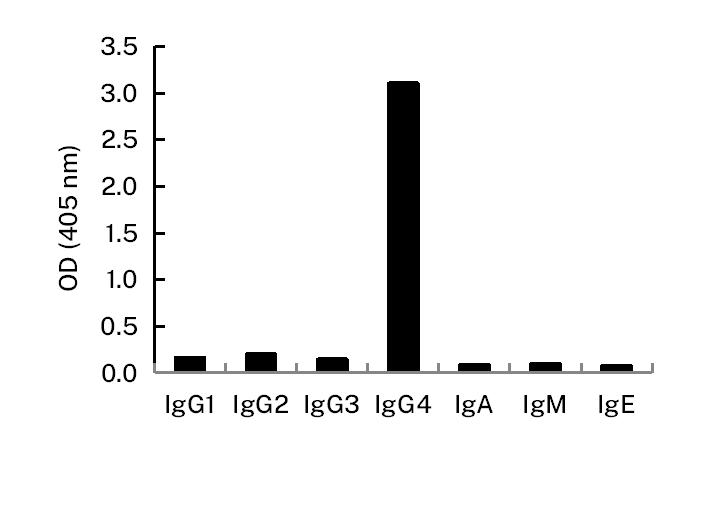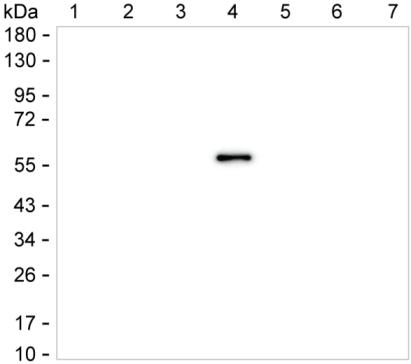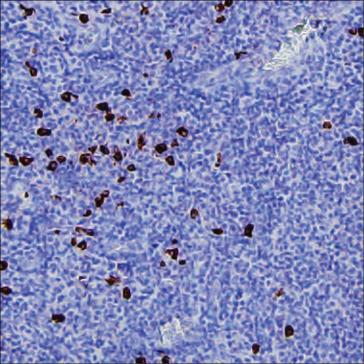


| WB | 咨询技术 | Human,Mouse,Rat |
| IF | 咨询技术 | Human,Mouse,Rat |
| IHC | 1/500-1/1000 | Human,Mouse,Rat |
| ICC | 技术咨询 | Human,Mouse,Rat |
| FCM | 咨询技术 | Human,Mouse,Rat |
| Elisa | 咨询技术 | Human,Mouse,Rat |
| Host/Isotype | Mouse IgG1 |
| Antibody Type | Primary antibody |
| Storage | Store at 4°C short term. Aliquot and store at -20°C long term. Avoid freeze/thaw cycles. |
| Species Reactivity | Human |
| Immunogen | Recombinant human IgG4 |
| Formulation | Purified antibody in PBS with 0.05% sodium azide |
+ +
以下是关于人类IgG4抗体的示例参考文献(建议通过学术数据库验证具体信息):
---
1. **标题**: *"Anti-inflammatory activity of human IgG4 antibodies by dynamic Fab arm exchange"*
**作者**: van der Neut Kolfschoten M, et al.
**摘要**: 揭示了IgG4独特的Fab臂交换机制,解释了其单价性和抗炎特性,提示其在免疫复合物形成中的调节作用。
2. **标题**: *"IgG4-related disease: an update on pathophysiology and implications for clinical care"*
**作者**: Stone JH, et al.
**摘要**: 综述IgG4在自身免疫性疾病中的异常累积机制,强调其与慢性炎症和纤维化的关联,探讨诊断与治疗挑战。
3. **标题**: *"The role of IgG4 in the fine-tuning of allergen-specific immune responses"*
**作者**: Aalberse RC, Schuurman J.
**摘要**: 分析IgG4在过敏原耐受中的作用,提出其通过竞争性抑制IgE结合来减轻过敏反应的假说。
4. **标题**: *"IgG4 antibodies in cancer immunotherapy: friend or foe?"*
**作者**: Labrijn AF, et al.
**摘要**: 讨论治疗性IgG4抗体因Fab臂交换可能导致的功能异质性,建议工程化改造以提升稳定性与疗效。
---
注:以上为示例,实际文献需通过PubMed/Google Scholar检索确认。建议结合关键词“IgG4 structure”“IgG4-related disease”“therapeutic IgG4”深入查找。
Human IgG4 is one of the four subclasses of immunoglobulin G (IgG) in humans, characterized by unique structural and functional properties. It constitutes approximately 3-6% of total serum IgG in healthy individuals. Unlike other IgG subclasses, IgG4 exhibits dynamic flexibility due to its "hinge region," enabling Fab-arm exchange—a process where half-molecules (one heavy-light chain pair) swap with those from other IgG4 antibodies. This results in bispecific, monovalent antibodies that cannot form large immune complexes, contributing to its anti-inflammatory role.
IgG4 is associated with prolonged antigen exposure, often elevated in chronic infections, allergies, or autoimmune conditions. While it weakly activates complement and binds Fc receptors compared to IgG1/IgG3. its limited effector functions help dampen inflammatory responses. However, IgG4 also plays dual roles in diseases: it may block pathogenic antibodies in myasthenia gravis but promote immune evasion in cancers by interfering with IgG1-mediated cytotoxicity.
Therapeutically, IgG4-derived monoclonal antibodies (e.g., pembrolizumab) are widely used in oncology and immunotherapy. However, their intrinsic instability (due to Fab-arm exchange) and shorter serum half-life than IgG1 necessitate engineering (e.g., point mutations) to improve clinical efficacy. Ongoing research aims to unravel its paradoxical roles in immune tolerance and pathology.
×